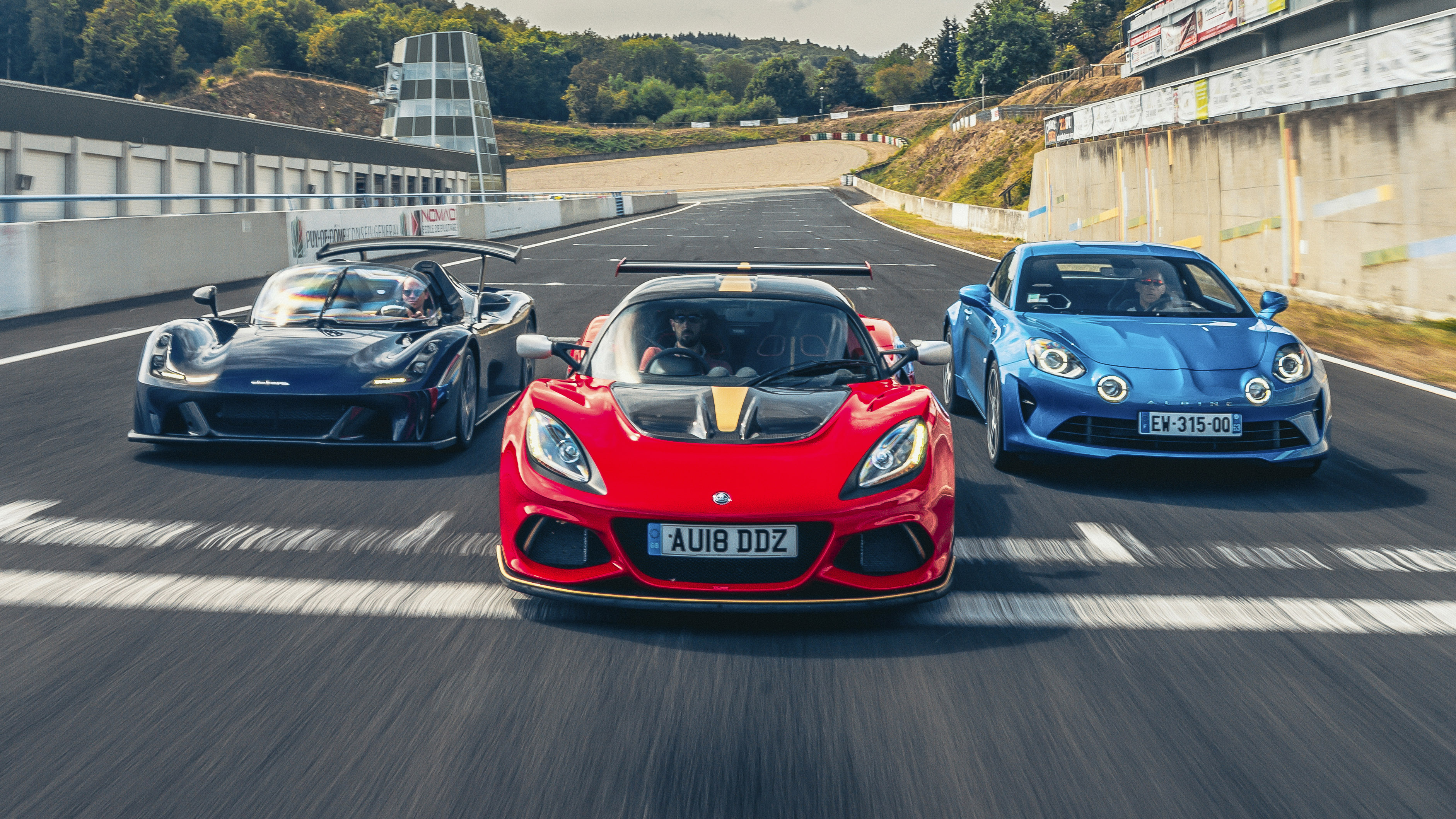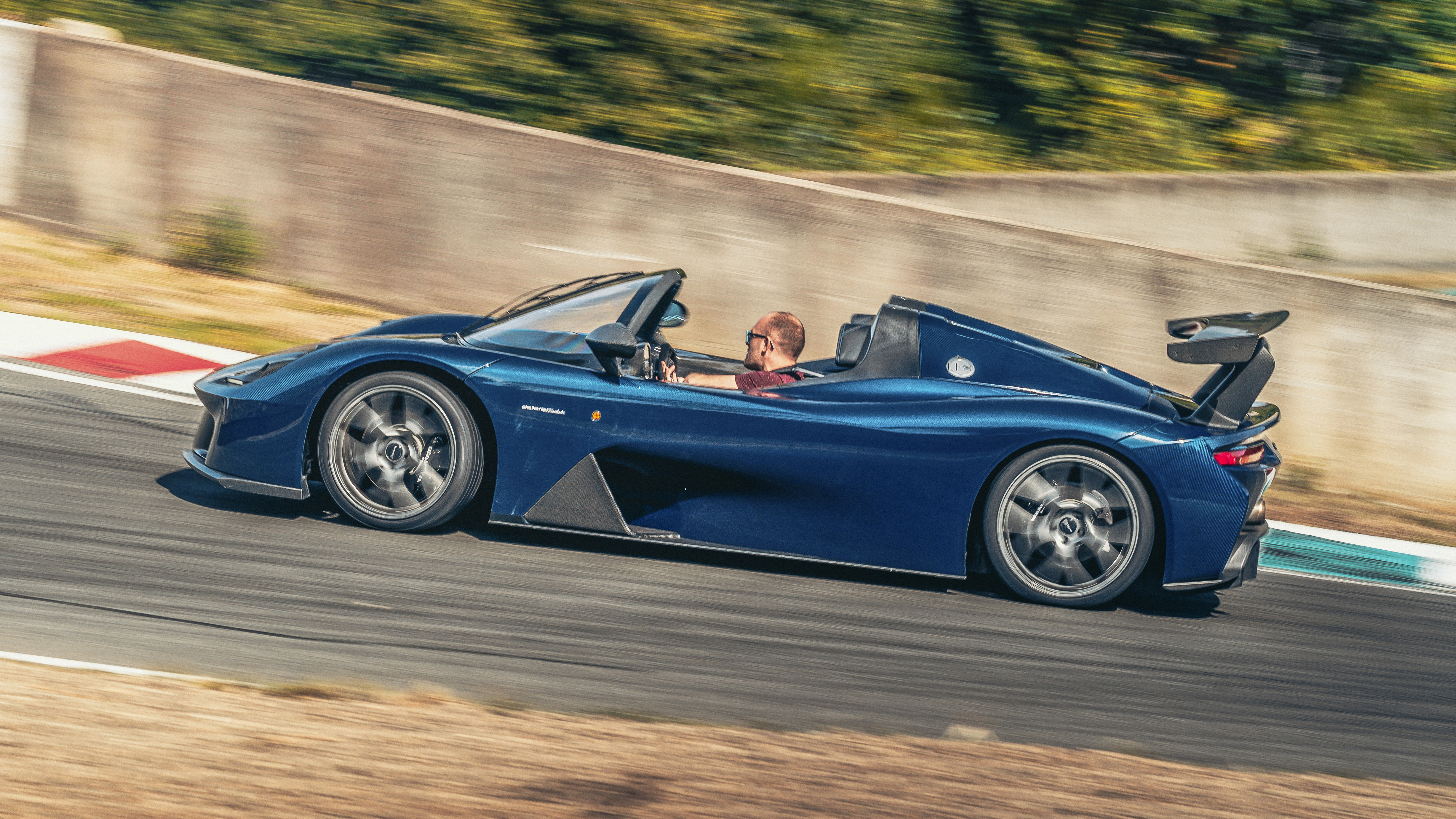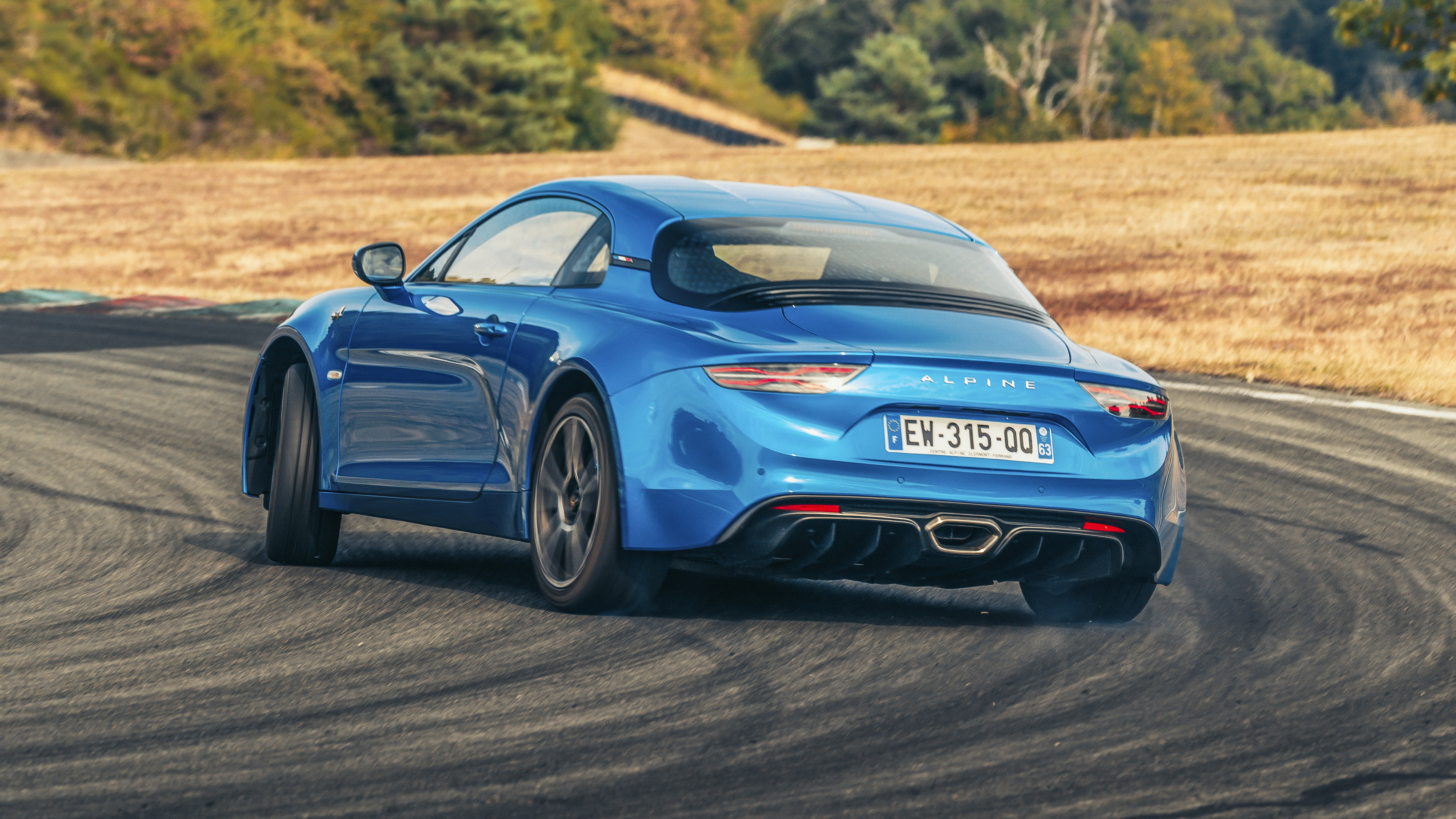
Dallara Stradale vs Lotus Exige Cup 430 vs Alpine A110
When it comes to track driving, weight is inversely proportional to fun
These are the best cars at Speed Week 2018. Of course they are. They’re focused lightweights, and if you’re going to drive on track – especially a track as endlessly testing as Circuit de Charade – you ought to be in a car designed precisely for the job. Not a plush supercar that’s had stuff removed (a backwards route to lightweight) and certainly not a big tractor with a V8 in it (just backwards, full stop).
But for cars with a shared ethos, this isn’t half a diverse bunch. From a Renault with an automatic gearbox to a carbon-fibre bathtub with a park bench on its rear deck – via the lairiest Lotus yet and a £150,000 gap – they represent three quite different approaches to lightweighting.
While the large, intimidating wing of the Dallara Stradale suggests I should work cautiously up to it, it’s impossible to resist such an outrageous-looking device. At once menacing, beautiful, exotic and scary, its arrival in the paddock makes a previously exciting bunch of cars look timid and predictable.
I’ve learnt to pole-vault my way over the sills of various track specials over the years, but never has the bar I’m attempting to clear been made of such luxuriant carbon fibre. The Stradale has come with its own crew, as well as its chassis guru, Loris Bicocchi; and helpfully they’ve all gathered round to watch me potentially stick my knee in some carbon before headbutting the ‘step here’ sign on the seat. Bicocchi, by the way, signed off the Chiron at Bugatti before coming to work his magic on this car. The fact they’re both here in matching colour schemes brings a big grin to his face.
A grin that remains unbroken as I land uncouthly but safely in the seat and begin tightly ratcheting myself into it. Submerged in the chassis, receiving the glare of the evil clown face on its steering wheel, I start worrying this is all beyond me. Loris taps me on the shoulder. “The tyres will be cold so you’ll need to be careful.” Gulp.
Two corners in, I’ve shrugged off his warnings and I’m pushing as hard as I dare. This thing is flipping extraordinary: focused and committed yet far more approachable than you’d ever believe. The suspension is very firm, presumably to aid ground effect, but it shrinks around you and it’s no time before you’re jinking onto kerbs and using every last inch of circuit. God knows what you’d have to do to make a mistake in it; you can basically brake on the apex and still slow down in time, or just not bother braking at all. It takes several laps to eradicate my ‘three braking zones per corner’ technique, having essentially stopped the car with my first brush of the left pedal (it’s a bit over-servoed), forcing me to pick up the throttle to reach my next completely incorrect braking point.
Even the drivetrain wows me, despite looking on paper like it doesn’t belong in the same postcode as a £200k car. Its 2.3-litre, four-cylinder turbo engine originates from a Ford Focus RS, but is so much louder and angrier, and the Dallara’s scant weight ensures 395bhp here is as violently effective as 690bhp in the Porsche 911 GT2 RS. The gearbox is a six-speed manual as standard, or robotised into a paddleshifter as an option, as in this car. It punches through with urgency and satisfaction and although upshifts can be a bit untidy, the downchanges are expertly blipped, so you concentrate fully on your braking and turning points. Often within a metre of each other, it turns out.
There’s so much force and urgency to every control that you’re constantly flat-out, not worrying about the finer details. Does that mean it lacks delicacy? Perhaps. That’s a dish served up beautifully by the other blue car here, though. You’d be forgiven for thinking l’Alpine might be out of its depth after the Dallara. We’ve covered rather a lot of road miles in the A110 since it first came out of Dieppe last year, and it’s never failed to bewitch us with its soft, forgiving ride.
If the Dallara does high-grip seriousness and the Alpine delivers low-grip silliness, the Lotus offers a sweet spot in the middle
But on track, where sumptuous suspension and a bit of body roll aren’t the first things you look for? I think it’s even more brilliant. Far from being swamped by the circuit – and its bespoilered competition – it relishes being given the space and freedom to properly play, and it’s an utter delight to throw around. While the Dallara makes you knuckle down and worry about perfecting your braking points, you mischievously lob this around like a delicate, rear-drive hot hatch, savouring its delightfully quick, light steering, a sharpish paddleshifter and the short reaction times infused through every component when a car’s weight has been pared back throughout its conception. While I’m sure it’d be sublime with a manual, I’m not upset it doesn’t have one. There’s precious little I would change here, save perhaps for the name on its V5.
Top Gear
Newsletter
Thank you for subscribing to our newsletter. Look out for your regular round-up of news, reviews and offers in your inbox.
Get all the latest news, reviews and exclusives, direct to your inbox.
However it’s hard to deny it lacks some drama after the Stradale. It has functioning doors, a conventional driving position, some protection from the weather. What ridiculous concessions to everyday life. The Lotus Exige Cup 430 has all of those too, mind, though good luck posting yourself through the tiny aperture betwixt roof and sill. There’s simply no cool, classy or unclumsy way to end up inside the Exige, which is all the more reason to stay in it until you’ve drained it of fuel.
You’ll really want to, as well. If the Dallara does high-grip seriousness and the Alpine delivers low-grip silliness, the Lotus offers a sweet spot in the middle. Its engine is outstanding in our whole group, not least for being the only one without a turbo. While the 3.5-litre V6 is, in bald terms, a Toyota engine with a supercharger slung on it, the sum is so much more invigorating than the parts. The surge of power is one thing – with 430bhp, it’s the most powerful of this trio – but it’s the hardening rasp as you chase revs that fills your ears and widens your eyes. A manual gearbox is welcome, especially when its componentry is so artfully displayed, and each of the Exige’s other controls are marvellously weighted, its non-assisted steering especially.
For a featherweight track car feeding bombastic power to its rear wheels, the traction it finds is absurd, and it’s not long before you’re loosening the almost infinitely adjustable electronic nannies. The Cup 430 finds so much grip, has such wonderful balance, that it can come as a bit of a shock when you provoke it and it properly lets go. A car that takes a bit of learning, then.
But then so is the Dallara. I’d not even mentioned its 820kg of downforce – on a car weighing 855kg – because I’ve no idea how much (if any) of it I used. I reckon it’d fully justify its monstrous price tag because it’d take so long to haul yourself up to a point where you felt like you were really driving it.
The Lotus, at half the price, is considerably better value, but the Alpine, at half the price again and with a ton more liveability, is basically a giveaway. Cost isn’t usually a factor in Speed Week, but when the most lightweight price is attached to the biggest sense of humour, how could la petite French car not shine brightly on its home turf? Even among the best cars here…
Stay tuned to TopGear.com this week for our Speed Week 2018 track tests. To see how we got down to the circuit, click here
Trending this week
- Car Review
BMW 1 Series










